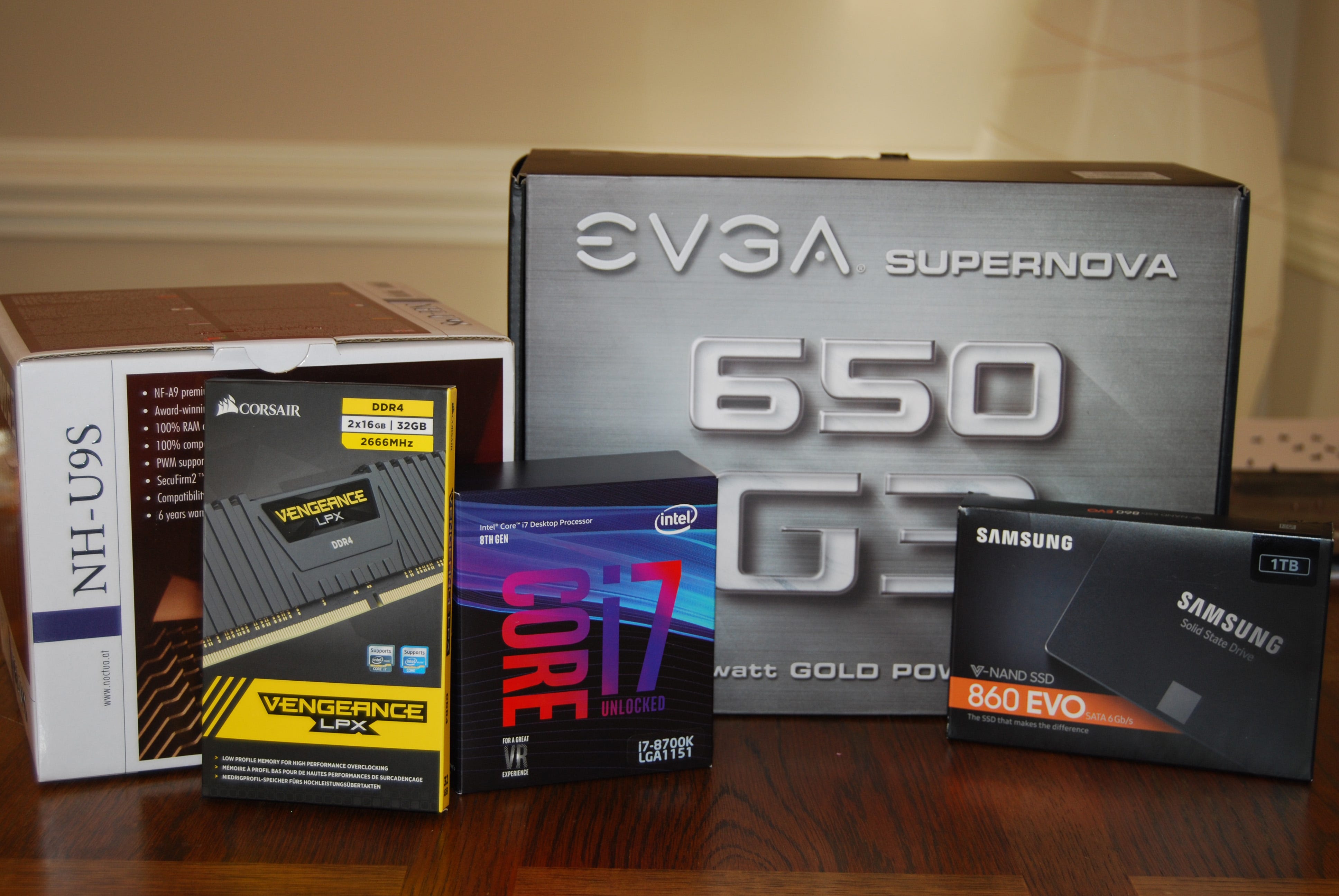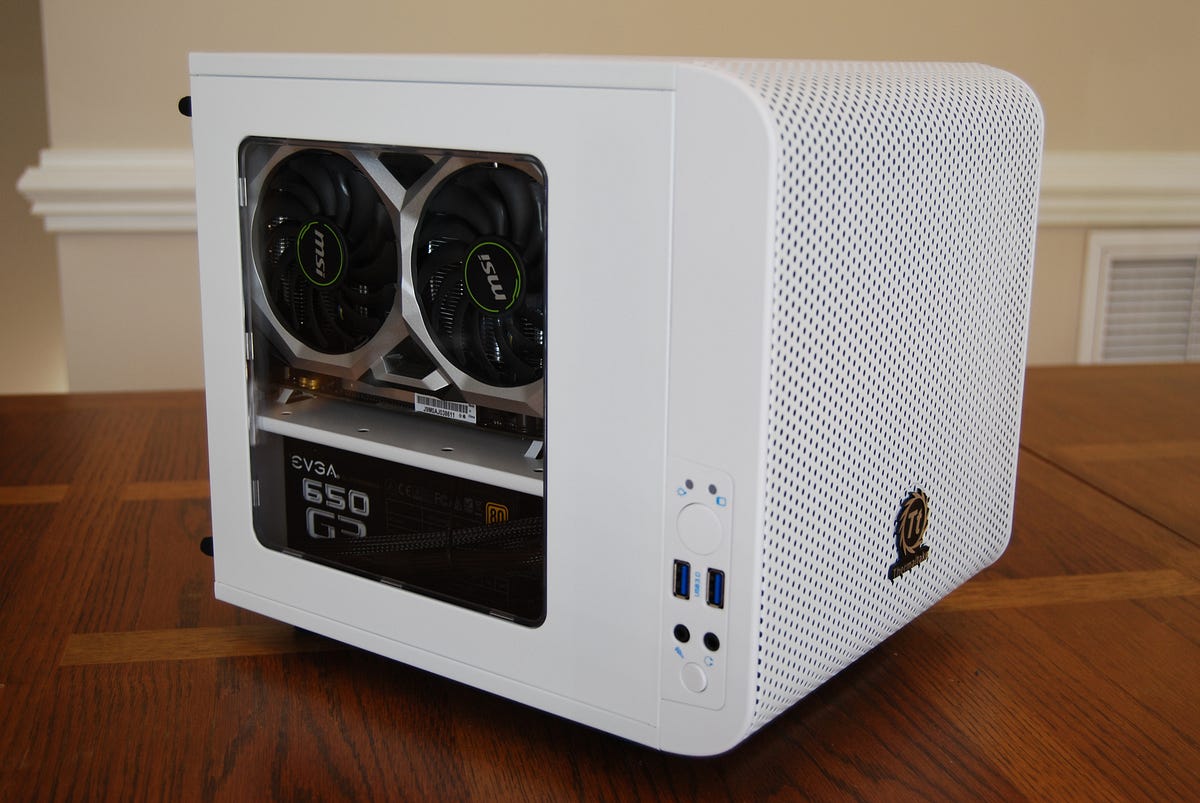After working with Machine Learning applications for a while, I was excited to try some Deep Leaning models. Probably the biggest obstable that I faced in getting started was the workflow, specifically, finding an accessible, fluid GPU-powered environment to work in. My Mac Pro (affectionately called the trash can model) was not going to help. I began to use cloud services, but missed having my own place to store data and run code without having the meter running. So I decided to build my own GPU box. At first it was pretty Intimidating (capital I), but things went fairly smoothly, and the end result was extremely gratifying. In case my adventure is interesting or helpful to you, here it is!

Motherboard
ASUS ROG Strix B360-I
I’ll start with the mobo. Let me say upfront that this build won’t apply without modification to your situation if you want to use multiple GPUs. I decided to build a mini-ITX form factor (i.e. small) machine with a single GPU because this was my first build and I thought it would be challenging enough. Also, I like my house to have a decorated and put-together feel, including my office. I wasn’t trying to create a man cave gaming paradise with a large neon-glowing tower. But can I say, I love this board! For the gamers, this was the only RGB item I bought for the system, and it’s perfect. But in practical building terms, the real bonus is the built-in I/O shield. As one of the helpful youtube gaming computer assembly gentlemen pointed out, installing the shield can be the most challenging part of the build. You’re already a hero for building your own rig; you can catch a break without feeling guilty.
Case
Thermaltake Core V1 Snow Edition
I decided on the case early in the process, because it determined the sizes that would be possible for some of the other components. It’s also pretty fun, because there are a lot of options. I chose the Core V1 because, while it’s certainly a mini, it isn’t super small, so there’s still plenty of room for cables, etc. Some things to watch out for are: 1) the CPU cooler height, 2) the length of the GPU, and 3) the length of the power supply (PSU). This case is incredibly well designed. I like the fact that the board sits upright instead of sideways, so your components aren’t ‘hanging on for dear life’ as one reviewer pointed out.
CPU
Intel Core i7–8700K
I think I may have over-bought on the processor. I had to have generation 8 to fit the motherboard, but the ‘K’ in the model number means that the processor is unlocked and so can be ‘overclocked.’ This is gamer language for pushing the processor to go faster than normal; however, my board doesn’t support this functionality anyhow (it’s a B instead of a Z series).
CPU cooler / heatsink
Noctua NH-U9S with NF-A9 92mm Fan
The cooler might be one place on a small machine where you pay a bit more, but this is the most highly rated item (reviewer stars) on my list. It’s still less expensive than many liquid coolers (although not as lovely). Plus, who wants to burn things up ’cause they were too cheap to spend an extra $30. You will learn to love this baby.
#computers #custom-built-computers #deep-learning #gpu-computing #gpu #deep learning
